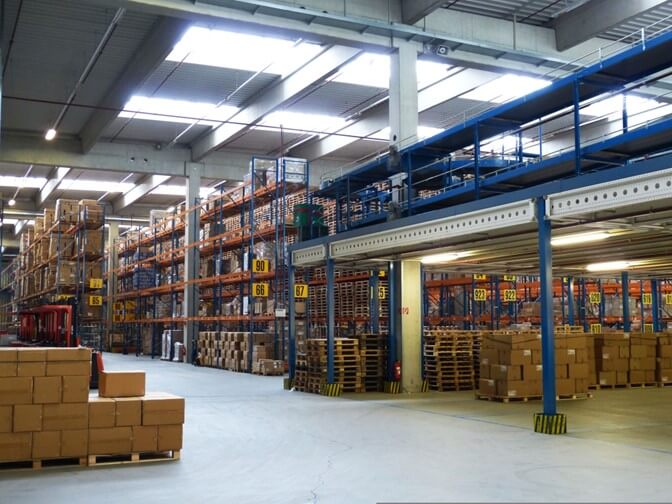Hospitality procurement is more than just buying products—it’s a strategic...
Read More
Table of Contents
What is RFID
Radio Frequency Identification is the full meaning of RFID. It involves tracking devices with radio frequency through tagging to transfer data. The tagged reader can be portable or permanently attached to a product. The whole concept is network-connected.
Radio waves are used to transmit signals to activate the tag. After activation, waves are sent back to the antenna through the RFID tag. The RFID tag receives the radio signal. In this case, it acts as a transponder.
RFID overall uses electromagnetic fields to identify magnetic fields and track tags attached to objects. The automatic system uses a transponder, receiver, and transmitter to deliver accurate results.
Here are some of the scenarios where RFID can be useful.

Example of RFID
Here are some of the scenarios where RFID can be useful.
- In casinos, RFID is fitted as robbery-proofed chips for easy tracking.
- They are used in weapons such as guns to aid in weapon control departments.
- RFID as an anti-theft device in smart fitting rooms.
- The health care department uses this technology to track sophisticated hospital equipment.
- In amusement parks, it lowers staffing costs, reduces wait time in lines, and provides operators with movement information of the visitors.
- Golf balls are tracked on the golf course using this vibrant technology.
- The technology in RFID enables the measuring of incoming and outgoing stock in the warehouse. It also supports locating specific products in a large warehouse.
Is it changing the future of logistics and supply chain management?
Logistics and supply chain management has not been left out in the RFID technology. The automation aspect of RFID reduces the need for humans in the supply chain. There are great transformations in performance and expenses in logistics and supply chain management.
The processes are made quicker, more convenient, and error-free. RFID improves the visibility of a product right from manufacturing to the supply chain and when the product exits the warehouse. It is obviously efficient and affordable.
There is a promising future with RFID in the supply of logistics and supply chain management.
Usage of RFID at each stage of the supply chain.
Factory
Tracking begins at the manufacturing level where item encoding with RFID tags begins. Its data is entered into the system. During item quality checks, they are scanned again, and finally, the last scan happens when items are moved to the warehouse.

Warehouse
RFID tags of items from the manufacturer are automatically scanned at the receiving dock. Instant reconciliation is done against inventory order lists.
Customer/Store
RFID tags enable real-time tracking of items during the shipping process. A final confirmation is done once the goods have reached their destination. Customers are provided with real-time data about product availability in the store.
Benefits of RFID in supply chain management.
Time-saving
Labor-intensive work in the business has been crossed out by the automatic system of RFID technology. Examples include recording incoming and outgoing products.
Asset tracking improvement
RFID technology has enabled businesses to track assets right from office machinery, portable items, and production materials to forklifts. The loss of these vital items has been greatly reduced in businesses.
Production control
Efficiency is improved and waste is reduced through the identification of individual components or items in a perfect system for customized storage and manufacturing.
Health and Safety
Serviced and inspected equipment is used to make sure that health conditions in a working environment have been met. Faulty machinery can be easily identified and restricted from operating until all dangers have been crossed out.

Accuracy booster
Manually recorded data has a great chance of human error. In RFID technology, mistakes have been reduced if not removed, in transcription and duplication during data collection.
Lesser processes
Automated picking systems and voice solutions reduce the time taken to process and deliver products to consumers or stores.
Good inventory management
RFID systems offer the reliability of in-stock product tracking. Real-time data on inventory levels is achieved through the integration of RFID and warehouse management systems.
More revenues
Improved inventory management has boosted efficiency and created a safe work environment. The cost of goods has been reduced, improved customer service, and generated better profit margins for a business.
Easy traceability
RFID has come in handy due to increased requests for visibility and transparency by customers. They can now track the shipment of their products from warehouses to the store.
Frequently Asked Questions on RFID
What is RFID and how does it work?
RFID stands for Radio Frequency Identification. It works by using electromagnetic fields to transfer data between a reader and an RFID tag attached to an object. The tag receives a radio signal, activates, and sends data back to the reader.
Where is RFID technology commonly used?
RFID is used across various industries including casinos (for chip tracking), healthcare (for tracking equipment), retail (in smart fitting rooms), amusement parks, golf courses, warehouses, and weapon control departments.
How does RFID benefit supply chain and logistics management?
RFID streamlines operations by automating tracking, reducing human error, improving inventory visibility, enhancing accuracy, and enabling real-time updates across every stage—from factory to store.
What are the key benefits of RFID in warehouses?
RFID helps with automatic stock measurement, faster reconciliation at receiving docks, real-time location tracking of products, and better inventory management—all leading to time savings and fewer errors.
Does RFID improve customer experience?
Yes. Customers benefit from real-time product availability updates, quicker shipping confirmations, and full traceability of their orders from warehouse to delivery.
Can RFID help reduce labor and operational costs?
Absolutely. RFID reduces labor-intensive tasks through automation, minimizes manual errors, and optimizes processes like picking, inventory checks, and asset tracking, which leads to cost savings.
Is RFID a future-proof technology for businesses?
Yes. RFID is transforming logistics and supply chains by improving efficiency, accuracy, safety, and transparency. Its ability to provide data-driven insights and automation positions it as a key tool for the future of business operations.

About the Author - Sebastian Herz
This blog has been thoughtfully written by a human (Max Sinclair, Founder of Ecomtent) not generically spat out by AI. Max spent +6 years at Amazon, including working closely with the A9 teams whilst owning Browse & Catalog for the country launch of Amazon Singapore. He also studied Deep Learning Essentials at the Mila Institute for Artificial Intelligence.
Don't forget to subscribe to our newsletter
Discover our latest blogs
RFID; Is it changing the future of logistics and supply chain management? Is it still useful?
Radio Frequency Identification is the full meaning of RFID. It...
Read More


